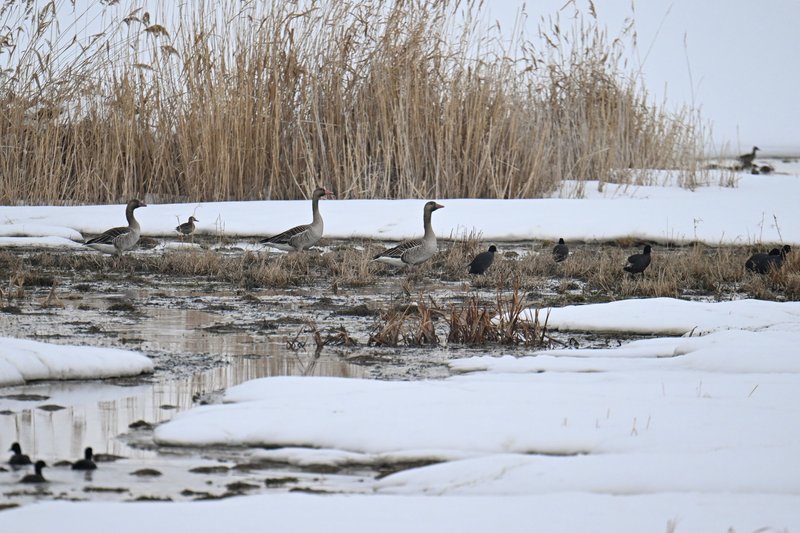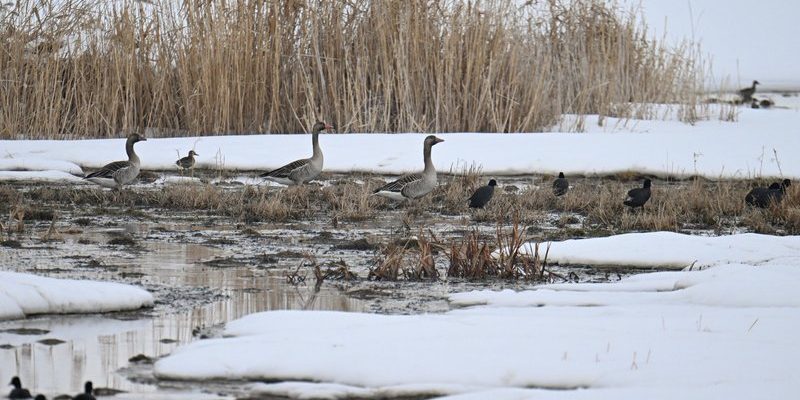
In recent years, various organizations, wildlife enthusiasts, and governments have stepped up to the plate, working tirelessly to shield these birds from risks like habitat loss, hunting pressures, and climate change. They’re employing a range of strategies, from habitat restoration to public awareness campaigns. Let me walk you through some of the creative and inspiring conservation efforts that are making a difference in the lives of geese.
Understanding the Importance of Goose Conservation
You might be wondering why it’s essential to focus on geese conservation. Well, geese are more than just birds with quacky voices; they play significant roles in their ecosystems. They can help maintain the health of wetlands by grazing on aquatic plants, which keeps those environments in balance. When their numbers drop, it can lead to overgrowth of certain plants, affecting the entire habitat.
Furthermore, geese are often seen as indicators of ecosystem health. Their presence or absence can signal changes in environmental conditions. Protecting them means we’re also protecting the habitats that countless other species depend on. So, when we support goose conservation, we’re actually contributing to preserving biodiversity as a whole. It’s like saving one piece of a puzzle—each piece matters to complete the picture.
Threats Facing Goose Populations
The challenges geese face today are a mixed bag, and understanding these threats is crucial for effective conservation. Habitat loss is one of the most significant concerns. As urban areas expand and agricultural practices change, wetlands and grasslands, which are vital to geese, are being drained or degraded. This loss of habitat means fewer nesting sites and less food for these birds.
Another major threat is hunting. While regulated hunting can be a part of management strategies, overharvesting can push certain populations to the brink. Additionally, hunting pressures often increase during migration seasons, making it a stressful time for geese. Climate change adds another layer of complexity, altering migration patterns and habitat conditions, which can further endanger goose populations. Understanding these threats is key to formulating effective conservation strategies.
Habitat Restoration Initiatives
One of the most impactful conservation strategies is habitat restoration. This approach involves reviving and maintaining the natural environments that geese rely on for survival. Organizations often work to restore wetlands by removing invasive species, planting native vegetation, and creating suitable nesting sites. It’s like giving geese their very own home makeover!
For example, many projects focus on reestablishing wetlands that have been drained for agricultural use. These restored areas become crucial stopovers for migratory geese, providing them with food and shelter. Effective habitat restoration not only benefits geese but also helps other wildlife thrive in these ecosystems. Imagine a bustling community of different birds, insects, and plants all coming together in a restored wetland!
Regulated Hunting Practices
Hunting can seem controversial when discussing conservation. But when done responsibly, it can contribute to healthy goose populations. Regulated hunting aims to maintain balance, allowing some populations to thrive while preventing overpopulation. Think of it like pruning a garden; a little trimming can actually promote healthier growth.
To ensure hunting remains sustainable, wildlife agencies set limits on hunting seasons, bag limits, and specific areas where hunting is allowed. By monitoring these populations closely, they can adjust regulations as needed to keep numbers stable. It’s a fine line that requires careful management, but responsible hunting can coexist with conservation efforts when handled correctly.
Community Awareness and Involvement
Community involvement plays a vital role in goose conservation efforts. Raising awareness is essential to ensuring that people understand the importance of protecting these birds. Local conservation groups often host educational programs, events, and citizen science projects to engage the community.
For example, some areas offer opportunities for residents to participate in bird counts or habitat clean-up days. These hands-on experiences can fuel a passion for conservation and help individuals feel connected to their natural surroundings. Picture a local park filled with families and students learning about geese and their ecosystems—it’s an inspiring sight!
Collaborative Efforts Across Borders
Many species of geese migrate across long distances, which means their conservation requires a coordinated effort beyond just local initiatives. Organizations often collaborate across borders to address shared challenges, such as habitat preservation and legislative policies. This cross-country teamwork ensures that actions taken in one area benefit geese as they travel to their wintering or nesting grounds.
For example, the North American Waterfowl Management Plan is a powerful initiative that brings together governments, conservation groups, and private landowners to protect migratory bird habitats. These collaborative efforts create a network of safe havens for geese, reinforcing the idea that conservation is a shared responsibility.
Innovative Research and Technology
Finally, innovative research and technology are playing a key role in conservation efforts. Scientists use tracking devices to study migration patterns and behaviors in real-time. This data helps conservationists understand where geese are struggling and how to prioritize their efforts.
Additionally, advancements in environmental monitoring technology can assess habitat health more accurately. With tools like remote sensing, researchers can identify changes in land use and climate impacts that affect goose populations. Armed with this information, conservationists can adapt their strategies, making their efforts more effective and targeted. It’s kind of like having a compass guiding you through a complex wilderness.
Conservation efforts aimed at protecting the goose are a testament to the resilience of both nature and the human spirit. From habitat restoration to community involvement and innovative technology, countless individuals and organizations are rallying to support these majestic birds. Goose conservation isn’t just about saving a species; it’s about protecting ecosystems, promoting biodiversity, and ensuring future generations can enjoy the beauty of nature.
So, the next time you spot a flock of geese flying overhead, remember the commitment and hard work that goes into preserving their legacy. It’s a collective effort that showcases our bond with the natural world and highlights the importance of every single bird in our skies. Let’s continue to support these initiatives and foster a world where geese, and other wildlife, can thrive.

